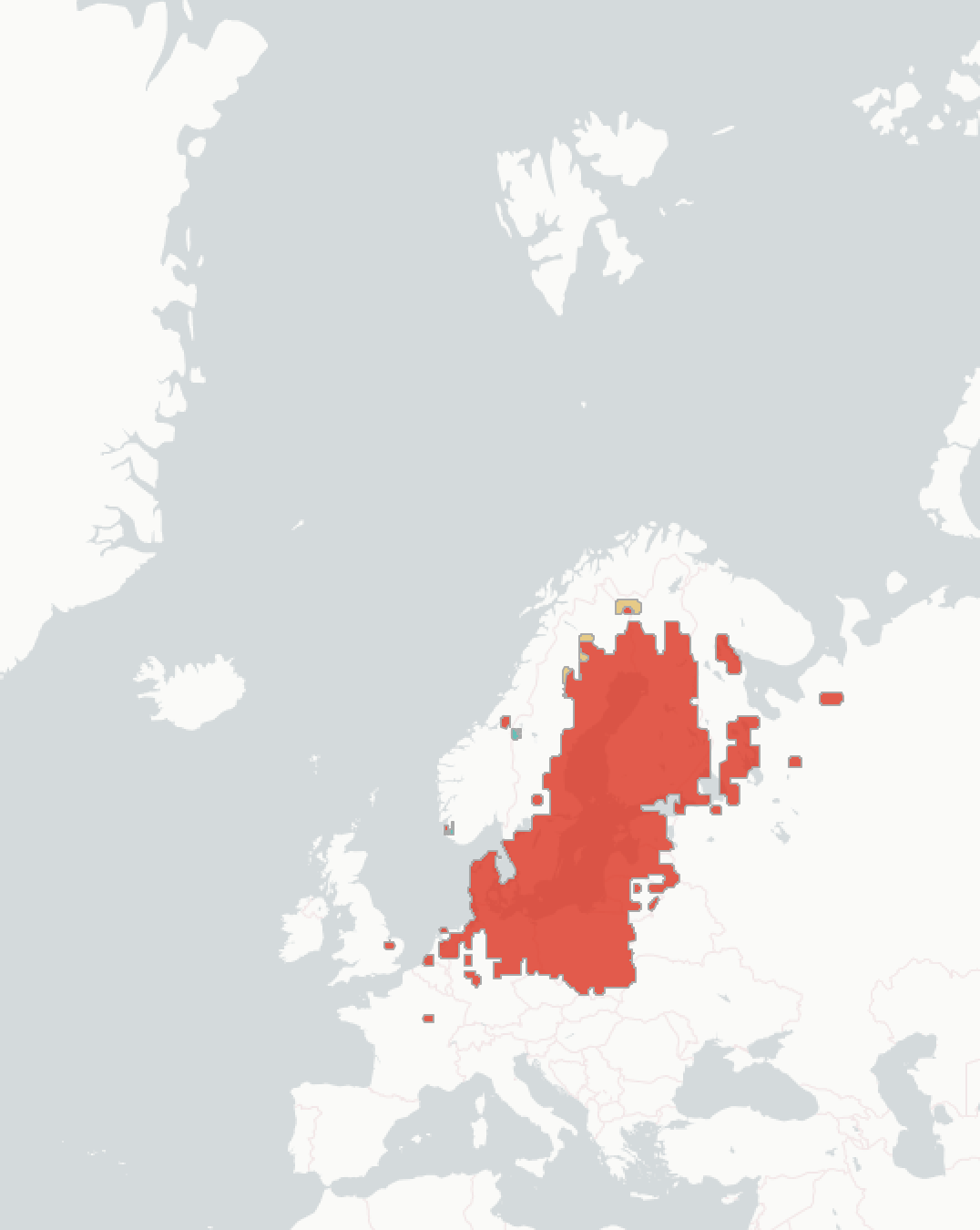Red-necked Grebe (Podiceps grisegena): vulnerability to climate change
Evidence for exposure
Potential changes in breeding habitat suitability:
-
Current breeding area that is likely to become less suitable (98% of current range)
-
Current breeding area that is likely to remain suitable (1%)
-
Current breeding area that is likely to become more suitable (0%)
Current impacts to Red-necked Grebes attributed to climate change:
-
No impacts have been documented for this species in Europe
Predicted changes in key prey species:
No key prey species are predicted to decline for this species.
Sensitivity
-
Sensitive to disturbance, nests are frequently abandoned in presence of human activity. May make conservation action or monitoring more difficult.
-
Sensitive to flooding and wave action as nest sites are often near the water-line and exposed. In some years this is major cause of nest and egg loss, and any increase in sealevel or frequency of storms may have significant impacts on nesting sites.
Adaptive capacity
-
Red-necked grebes readily change breeding site, often changing their site each year. In some cases they will even change nest site during the breeding season. They could potentially rapidly change breeding areas in response to climate change.
-
Has a varied diet of both fresh and saltwater species. The loss of one or a few species is unlikely to significantly impact most populations
